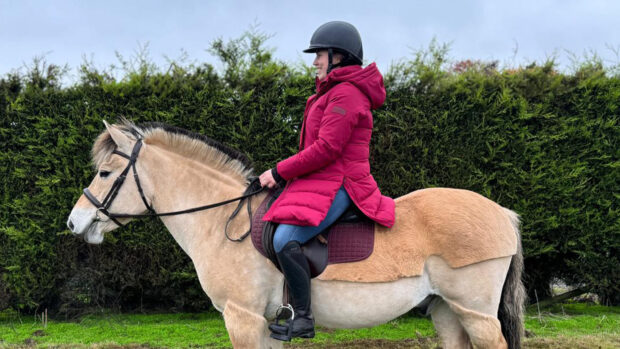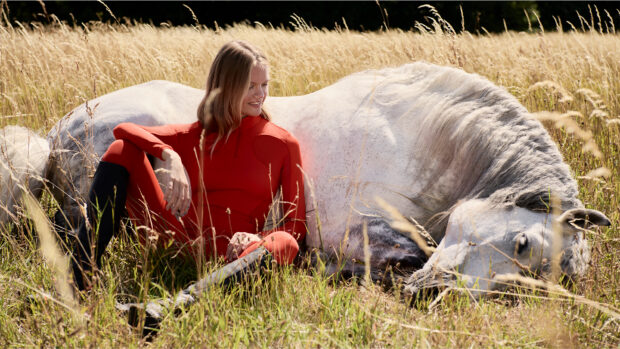If you're looking for a new waterproof riding jacket, then allow Andrea Oakes to explain the options you should consider before making this important purchase
The best waterproof riding jackets will deal with whatever the weather can throw at you, whether you’re hacking over the hills, teaching in an outdoor school or walking a cross-country course. From persistent drizzle to driving rain, the wet stuff will be more bearable with an effective outer layer.
The equation of warm + dry = happy is easy enough to understand when it comes to choosing a jacket, but technical jargon and endless options can soon cloud your judgement. Our handy buyer’s guide outlines some of the key features to keep in mind, detailing all you need to know to keep yourself well-covered.
Is it waterproof?
It sounds obvious, but your jacket must be waterproof to keep you dry. If it says ‘showerproof’ or ‘water resistant’ on the label, it may not cut the mustard in heavy or prolonged downpours.
Waterproofing is generally achieved in one of two ways – a membrane system on the inside of the material, or a water-repellent treatment on the outside. The inner membrane tends to offer the best balance between being waterproof and breathable, with lightweight membranes such as Gore-Tex keeping rain out while allowing vapours to escape. Look for taped seams to avoid water penetration through vulnerable areas, particularly around the shoulders.
Treated outers will also do a pretty good job at keeping rain out. Waxed or oiled cottons do tend to be a little heavier to wear, however.
Waterproof and breathable coats will eventually need re-proofing, which is easy enough with specialist products that can be put in the washing machine. Re-waxing a coat is a messier and more time-consuming job, but should restore its waterproof properties.
With a waterproof outer shell sorted, it’s time to think about the inner layer. A simple mesh lining may be sufficient for warmer seasons, keeping the shell away from your skin and enhancing the breathability of the jacket. For chillier days you’ll need an insulating inner layer. Lining options include fleece or microfleece (its softer, thinner counterpart), cotton or quilted polyfill. Removable inner layers that can be changed with the seasons will allow you greatest flexibility.
It can be difficult to judge just how warm a jacket will be. The level of insulation is one factor, while the wind-resistance of the outer is another. Don’t judge a jacket by its weight, however, as some of the warmest and most effect modern materials are the lightest.
Your need for warmth will largely be dictated by your level of physical activity and the conditions you’ll be out in. There’s no doubt that being dry is the key to comfort. Fabrics can be rated for their waterproofing and breathability, so it may be worth looking into these technical aspects if you’re out in all weathers. Otherwise, make quality materials and construction your priority to keep rain out and warmth in.
The long and the short of it
Coat length deserves serious consideration, as this will affect not just your comfort level but your ability to carry out certain activities.
Yard work will be easier in a short-cut model, which allows more freedom to bend and flex, but a longer style can be a winner on rainy rides. The fuller ‘skirt’ effect will keep the miserable drip-drip of water away from your saddle, so your lower half will stay considerably drier. Thighs can become surprisingly cold, too, in frost or wind, so keeping them covered can boost your internal heating.
If you’re really putting in the miles you might benefit from a stockman-style full-length coat that’s cut to accommodate your saddle. Good models will offer sufficient coverage without acres of flapping fabric, with thoughtful design points such as straps to keep the coat close to your legs and a storm cape across your shoulders for foul weather protection.
Whatever the length, think about fit – will the coat restrict your movement in the yard or saddle? Four-way stretch materials are worth considering, along with riding-specific designs cut for fast canterwork or jumping. Gussets, panels and rear vents will all allow extra freedom to move.
Continued below…
Waterproof riding jacket reviews from Horse & Hound

Musto Kempton BR1 Jacket: first impression
£149

Noble Outfitters Elite Performance jacket with detachable hood: review
£139.99

Noble Outfitters Evolution insulated jacket: review
£159.95

Craghoppers Chatsworth jacket: review
£89.95
Read more waterproof riding jacket reviews from Horse & Hound >>
The overall shape is down to personal taste. Belted waist or blouson-style, classic or fashion forward – the choice is yours. While a sack-like effect is never flattering, something too tight can sometimes ride up – plus a slightly more generous fit will create room for warm body air to circulate.
Picking pockets
Now for the all-important fastenings, which can make life so much easier if cleverly designed.
Zips are usually hardwearing and easy to use, especially the chunkier ones, but should ideally be sealed, covered or water-resistant. Two-way zips are a handy feature if you’re riding, allowing you to open up the coat at the bottom – just check that the zip won’t scratch the pommel of your saddle. Velcro fastenings tend to be fuss-free, but can become clogged with hay and horsehair if neglected and lose their ‘stick’.
Useful design extras include a high collar for draught exclusion, wrist and waist adjusters for a snug fit, and a drip strip at the hem to guide water away from the lining. Try to visualise the worst weather scenario when choosing a coat – knitted cuffs may be cosy in the dry, for example, but will they soak up water like a sponge in the wet?
A hood is handy, as long as it’s adjustable and well-shaped with a stiffened peak. Some will even fit over a helmet, or detach or roll away if conditions are too windy. Pockets can be deep and voluminous or fleece-lined to warm hands, as long as they’re protected from rain and easy to access. Pockets that fasten securely closed are a godsend when it comes to keeping phones and keys where you need them. A few tasteful reflective strips aren’t a bad idea, either, for the dark nights.
Before you buy, check the jacket’s care instructions. The ability to put it through the washing machine might be a bonus if you plan to wear it anywhere else than at the yard.
A final point worth considering is the ‘rustle-factor’ of your intended purchase. A crackly finish could be the undoing of a nervous horse – bringing you home from a hack far quicker than planned. Noiseless fabrics are available!



